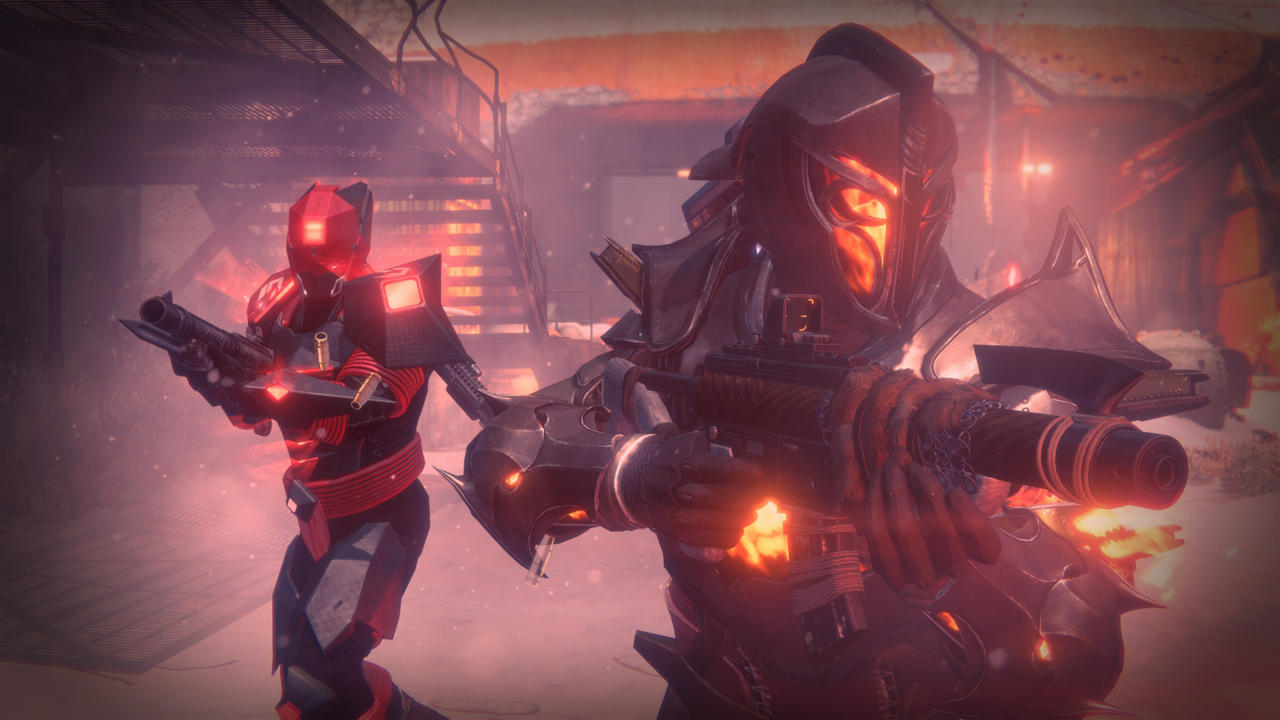With Rise of Iron, Destiny feels like a game that’s within reach of fresh ideas, but can’t quite escape its own past. There are moments of exhilaration throughout the newest expansion, and a few inspiring missions remain rooted in my memory, but as Bungie’s shooter wades into its third year, a sense of fatigue has risen to the surface. Destiny’s exhaustion is beginning to show.
From a story standpoint, Rise of Iron follows our Guardians as they assist Lord Saladin, one of the last remaining members of the Iron Lords, in his fight against Siva, a nanobot plague that all but exterminated his group years before present events. Rise of Iron borrows its aesthetic from fantasy tales such as Lord of the Rings and Game of Thrones, pulling us up to the snowy Felwinter Peak to the sound of low horns and loud clarion calls. At its outset, Rise of Iron displays a confident sense of character.
But that wears thin soon thereafter. Destiny’s new campaign lasts for about 90 minutes, and while it does a decent job of setting up the expansion’s late-game missions and public events, the plot serves only to introduce us to new quest-givers and areas of interest. Any narrative promise the opening moments display soon fades. The campaign’s final boss battle may be thrilling--it encourages frantic melee combat against an onslaught of enemies--but the short trip it takes to get there is forgettable.
As a major Destiny expansion, of course, Rise of Iron also brings additional cooperative strikes, public events, player vs. player options, a new social space, a new patrol zone, and a six-player raid. I call this content additional, and not new, for a reason: much of Rise of Iron’s content is taken from Destiny’s first two years and given a fresh coat of paint.

Yes, Siva-infected enemies bring new dangers to firefights, and existing bosses have changed their combat strategy to make things just fresh enough to initially feel different. But the Destiny grind is more apparent here than ever. I’m once again firing round after round into Sepiks Prime. I’m patrolling the snowy wilderness on a strikingly familiar Earth. I’m wading through strikes I’ve played dozens of times before. The Wretched Eye strike, Rise of Iron’s truly new cooperative venture, is one of the aforementioned shining moments. But it’s surrounded by vapid echoes of the past.
Rise of Iron’s player vs. player content follows suit. The new Supremacy game mode requires you to pick up fallen orbs from slain enemies, not granting you full credit for a kill until you do so. You can also deny opponents their points by collecting your comrades’ telltale remains--the system creates tense situations as players rush into the open to gather orbs, only to die and make the field that much more tantalizing for the next challenger. Smart players can hang back and pick off scavengers shortly before gathering several points for themselves.
While Supremacy does lure you out of your comfort zone with enticing scenarios, the experience is only a slight variation on the classic deathmatch formula. As with Rise of Iron’s campaign, Supremacy feels uninspired. Rise of Iron’s maps are well designed, combining close-quarters battles and long-range engagements with seeming ease, proving once again that studio Bungie is a top-tier developer of competitive shooter arenas. But these maps set the stage for a new mode that doesn’t pull its own creative weight.
The redundancies in Destiny's campaign, strikes, and Crucible content are a shame, too, considering the moments of greatness Rise of Iron does deliver.
The redundancies in Destiny’s campaign, strikes, and Crucible content are a shame, too, considering the moments of greatness Rise of Iron does deliver. The quest line to obtain the newest version of Gjallahorn, Destiny’s now-mythical rocket launcher, culminates in a massive battle the likes of which Bungie hasn’t created since its Halo days. Archon’s Forge, the expansion’s new public event space, plays host to chaotic battles between a possible nine players and a variety of alien bosses. The sheer spectacle of these skirmishes combines with Destiny’s mechanical fluidity to create some of the shooter’s finest moments to date.
This rings true in Rise of Iron’s Wrath of the Machine raid. The trek pits you and five other players against an array of enemies in a bevy of complex scenarios that don’t use boss battles and hordes of enemies as crutches.
While these elements are present, Wrath of the Machine demands that you rethink what a boss fight can be: without spoiling too much, one section of the raid asks you not just to battle a massive enemy, but use it as transportation, too. Wrath of the Machine’s final encounter is one of those shining moments I keep coming back to. Despite the difficulty you’ll encounter, it’s a stunning combination of teamwork, survival techniques, and combat tactics, as well as using the expansion’s pervasive Siva against itself, that will carry your squad through.

But the raid is the sparkling light at the end of an often-dreary tunnel. I spent dozens of hours slogging through familiar strikes, uninspired new Crucible content, and a patrol zone that felt like a retread, not an adventure. I found myself playing more for the new gear and Light levels--for the progress--than the actual enjoyment.
As an expansion that revamped how Destiny actually played, last year’s The Taken King was a major step forward for the shooter. But Rise of Iron feels merely like the other foot catching up to rest firmly in place. It feels timid. It feels safe. It feels like the last remaining breath before the possible sequel, as if Destiny is standing still and waiting for inspiration to arrive, rather than going out to find it.



